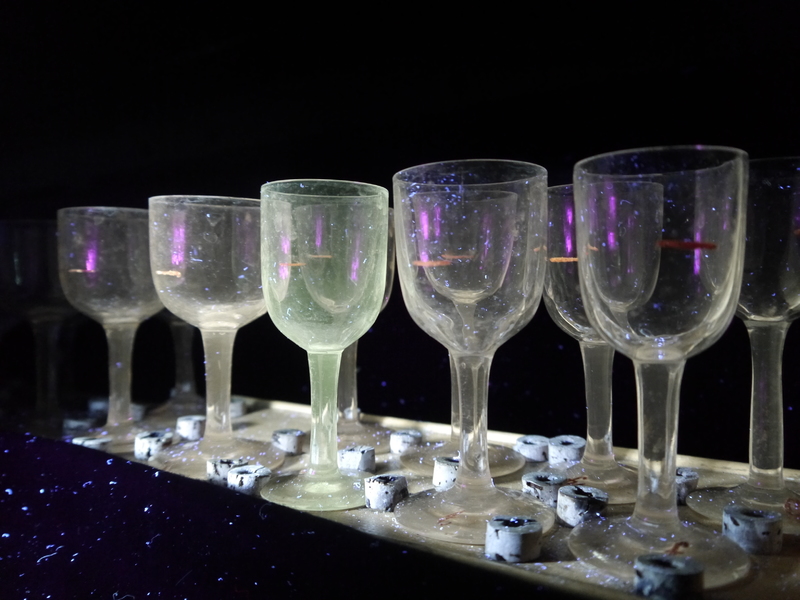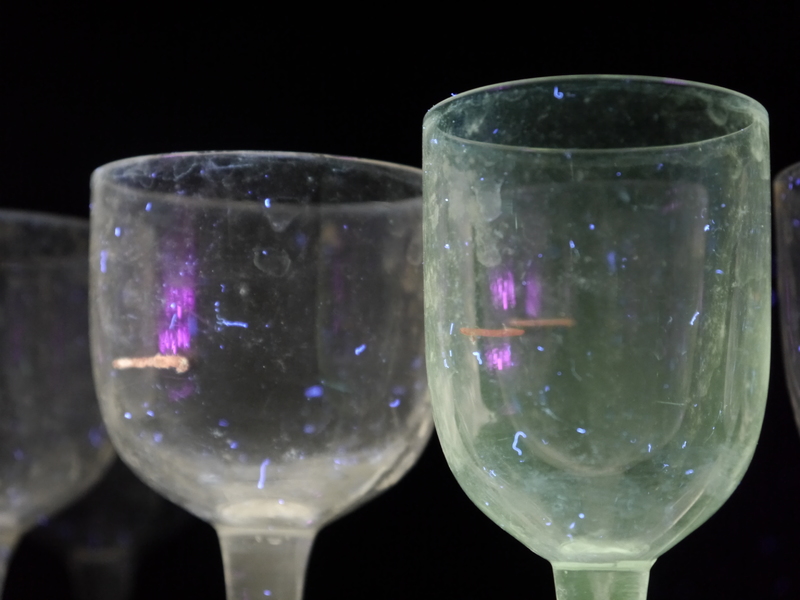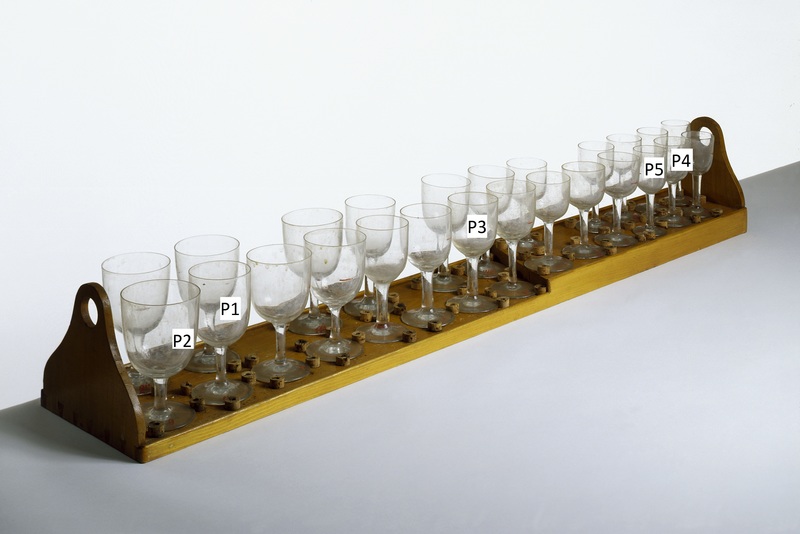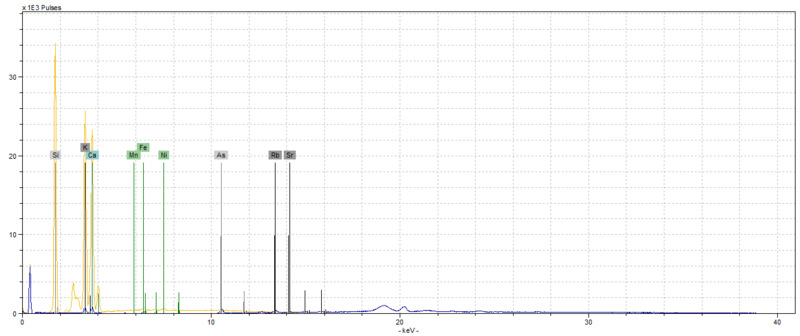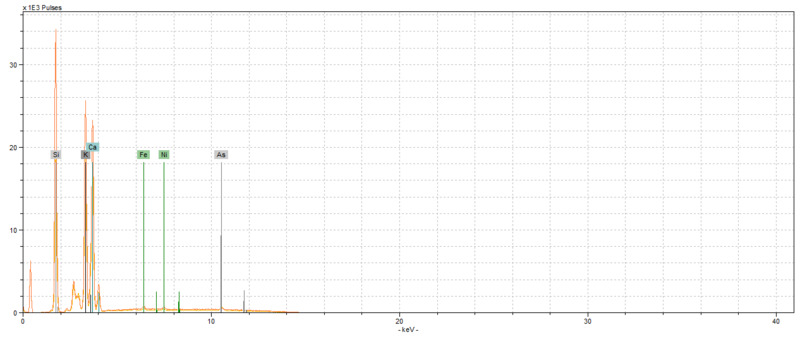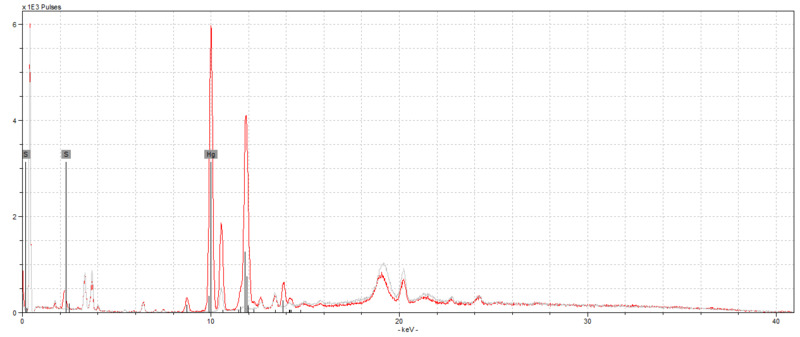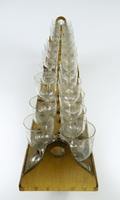Set of musical glasses
Germany ca. 1900, Inv. No. 2003-27
UV light fluorescence could be performed on the whole instrument by turning off the light in the room and using a black blanket. The colorless, transparent glass showed no fluorescence with the exception of one glass used to produce the tone d’. It turned green under the UV light. (Koob 2006, p. 36)
XRF was conducted on five different glasses, including the one with green fluorescence in ambient conditions. Additionally, the composition of the red line that marks the amount of water to be filled in the glasses was analyzed. With the exception of the red line, the resulting spectra matched clearly, which reflects the homogeneity of the glasses used. Consequently, the interpretation of only one measurement taken from the glass in the instrument (P1) was justifiable.
The glasses from this instrument seem to be typical drinking glasses made of alkali-silica glass; sodium could not be detected with this method. No difference between the glasses with or without fluorescence was detected. An electron microprobe analysis on a set of musical glasses from the Museum of Fine Arts in Boston revealed a very similar composition plus the presence of sodium (Newmann 1997). Further similarities could be seen with the bowls from the glass harmonica (Inv. No. 7996), the glass flute and the manganese rich plate from the glasschord (for more details see the comparative interpretations section).
In the paint used to mark the water line on the glasses, mercury and sulfide were detected. Therefore, it could be verified that the pigment mercury sulfide (HgS) was applied.
From a preservation perspective, the glasses are susceptible to high levels of humidity, because of the potash fluxing agent. Manganese was detected in the glasses by XRF, but not by UV fluorescence. Therefore it is assumed that only small amounts of manganese are present and that the glasses are not considerably susceptible to solarization.
Click here for more information on the set of musical glasses.
Citation: Charlotte Holzer, ‘Findings from Non-destructive Material Analysis on Musical Glass Instruments’, in: Materiality of Musical Instruments. A Virtual Exhibition.

